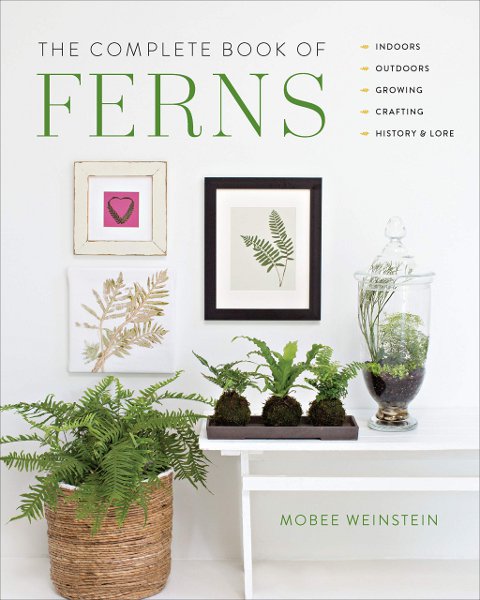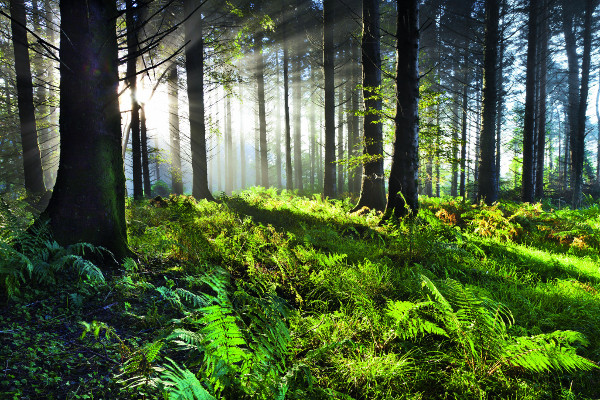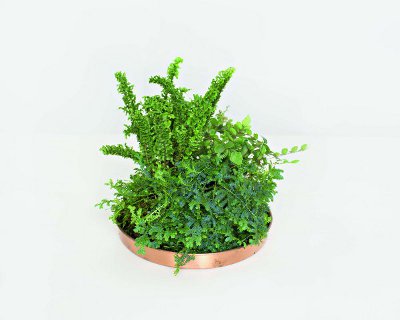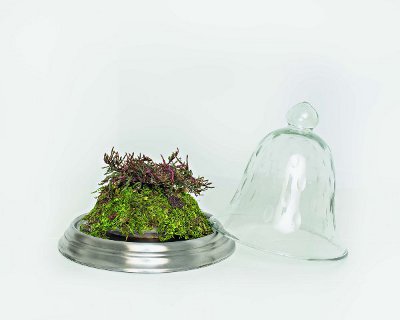
image, courtesy of Cool Springs Press, an imprint of Quarto Publishing Group
The Complete Book of Ferns by Mobee Weinstein
.
If you have any comments, observations, or questions about what you read here, remember you can always Contact Me
All content included on this site such as text, graphics and images is protected by U.S and international copyright law.
The compilation of all content on this site is the exclusive property of the site copyright holder.
The Complete Book of Ferns
Indoors / Outdoors / Growing / Crafting / History & Lore
a book review
Monday, 27 January 2020
Fern. That's generic. Look at options and possibilities and there are - ferns that are deciduous, others that are evergreen, even in cold winter climates. Some ferns politely grow in neat and tidy clumps while others run, rampantly spreading. Many grow on the ground, some are epiphytic, growing up in the air, perched on tropical trees. Options and possibilities. Ferns have magical properties, or so it was once thought:. To quote Shakespeare, Henry IV Part I, Act 2, scene 1, "We have the receipt of fern seed: we walk invisible" Fern seed? But ferns have neither flowers or seeds. And that is why if you could gather the invisible seeds - why, it was thought that you would become invisible too.
If you'd like to find useful information about the diversity of ferns look no further than

image, courtesy of Cool Springs Press, an imprint of Quarto Publishing Group
The Complete Book of Ferns by Mobee Weinstein
The book begins with a thorough explanation of the history, lore, and uses of ferns. Here you will find interesting explanations of subjects from how ferns are able to grow in woodland shade to

copyright Shutterstock, image provided courtesy of Cool Springs Press, an imprint of Quarto Publishing Group
the Victorian fern craze and invention of the Wardian case, and a few other-than-garden uses.
Next, an easy to understand explanation of the botany of ferns. Since they have not flowers, their two-stage reproduction from spores is given a lucid explanation and full page illustration of the stages of this intriguing life cycle. That actually comes after discussion of the parts of a fern - roots, leaves, stems, and their diversity: forms, life styles and climates where found.
Gardeners grow plants from seed - some seeds are easy-peasy, others more problematic. Ferns are an entirely different story. I've propagated ferns from spores, so clearly it is an option, if attention to detail is carefully observed. Thorough step by step directions, accompanied by photographs, walk the novice through the stages from collecting, storing, sowing spores to raising a new fern are well described. Still intimidated? There is another option - asexual propagation by division and root cuttings. This chapter concludes with an explanation of botanical names and what they mean. If you have been disheartened by Latin names fear not. Read through these few pages and you'll understand why common names can be problematic and what you can learn from their more formal names.
Gardeners might feel that this is all very good but irrelevant to getting into the dirt. Their interest is in growing ferns. Be assured, that information is well discussed, with options for Greening Your Environment through the cultivation of ferns both indoors and out. To begin with the basics

copyright Shutterstock, image provided courtesy of Cool Springs Press, an imprint of Quarto Publishing Group
of light exposure, temperature, growing medium, watering, and humidity. Ferns grown indoors are, for the most part, from tropical regions. Conditions relate to each other - if light levels are lower in winter when temperatures are also lower the ferns will be growing more slowly and require less water. Makes sense, does it not. There are three "recipes" for potting mixes, specific to different types of ferns. Another technique to increase humidity includes double potting with clay pots, or self-watering wicking.
There is useful information on topics ranging from choosing pots to going on vacation (up to a week or ten days), troubleshooting issues of light, water, temperature extremes that even includes a symptom guide, probable cause, and solutions. Then there is dealing with pests. An aside here - I live where deer practically look in the kitchen window to ask for coffee to go with the salad bar I call a garden. Deer have not, so far, sampled ferns. But you might have to cope with mealybugs, scale insects, mites or other pests, or diseases.
Next, a lovely selection of ferns for indoors, some readily available, others more uncommon. Information provided includes both common name and Latin name, a paragraph of general information, culture, propagation, and notes. Each fern has an image. It may be overall of the plant, or a single fern frond.

copyright Christina Bohn Photography, image provided courtesy of Cool Springs Press, an imprint of Quarto Publishing Group
Next, from inside to outdoors, Greening Your Environment with Ferns Outdoors.
What ferns need - the basics of light, soil, water. How to plant, whether potted,
transplanted, or a division. Seasonal care from spring through summer into fall.
And a thorough selection of ferns from small to tall to add beauty in the shade.
There's ample information on ferns indoors - from choosing pots to choosing ferns, how to pot, water, and where to place for suitable sunlight. Ferns for the outside woodland or shady garden. Botany of ferns. Their history, lore, and more. You might think that all bases have now been covered. Almost, but there is one more chapter and Do-It-Yourself Crafting with Ferns could be the most playful.
 .
.
copyright Christina Bohn Photography, images provided courtesy of Cool Springs Press, an imprint of Quarto Publishing Group
Remember the Victorians, their pteridomania (fern mania) and the Wardian case.
A simple way to increase humidity for small ferns is with a cloche - or a terrarium.
DIY projects such as establishing a terrarium, well illustrated with an an image of
what you'll need in the way of tools and materials through 4 pages of step by step
text and pictures to the finished project.

copyright Shutterstock, image provided courtesy of Cool Springs Press, an imprint of Quarto Publishing Group
Perhaps a vertical garden might fascinate you. Living walls are quite popular, but start small.
A moss basket, a kokedama free form hanging moss ball and more. Fern print options from pressed fern fronds to hammer dyeing (making fern prints on fabric) to cyanotypes.
Ferns are mystical and magical. They are locally native and tropical exotics. Embellish your home and garden with ferns, ably assisted with this book.

copyright Shutterstock, image provided courtesy of Cool Springs Press, an imprint of Quarto Publishing Group
The Complete Book of Ferns:
Indoors / Outdoors / Growing / Crafting / History & Lore
by Mobee Weinstein. published by Cool Springs Press,
an imprint of Quarto Publishing Group, Beverly, MA,
Hard cover, color images throughout, $30.00, 2020
ISBN 978-0-7603-2
A review copy of this book was provided by the publisher
Back to Top
Back to January
Back to the main Diary Page